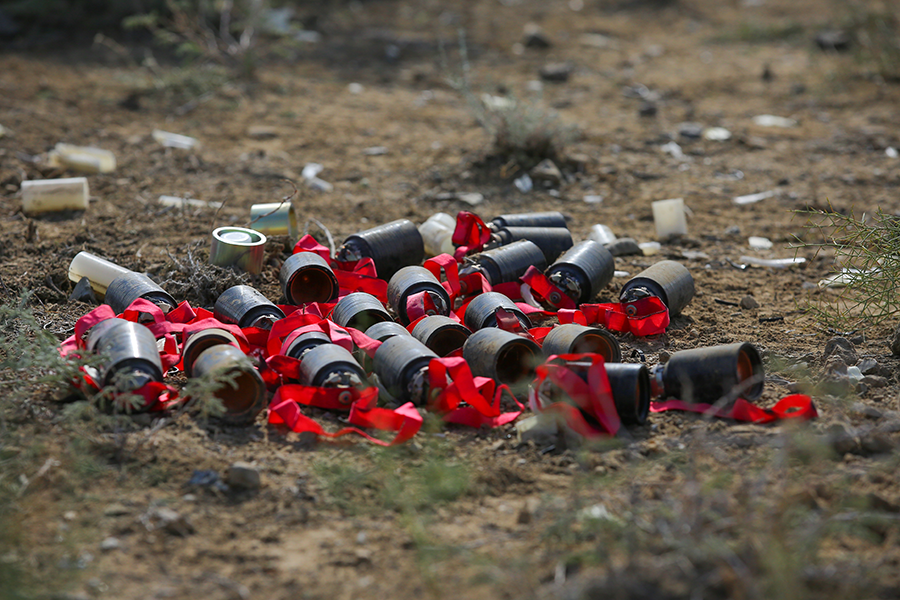"The Arms Control Association’s work is an important resource to legislators and policymakers when contemplating a new policy direction or decision."
New Action Plan Adopted on Cluster Munitions
October 2021
By William Ostermeyer and Jeff Abramson
States-parties to the pandemic-delayed review conference for the Convention on Cluster Munitions have agreed to a new five-year plan intended to “move forward towards a world free of cluster munitions.”
 During Sept. 20–21, the second five-year review conference came together in a hybrid format, with some delegates meeting in person in Geneva while the rest participated remotely.
During Sept. 20–21, the second five-year review conference came together in a hybrid format, with some delegates meeting in person in Geneva while the rest participated remotely.
Originally scheduled to take place in Lausanne, Switzerland, in 2020 to mark 10 years since the treaty entered into force, the conference met virtually for three days in November 2020 and postponed adoption of documents in hopes that in-person meetings would be possible in 2021.
The Lausanne Action Plan adopted last month includes 50 specific measures, covering topics such as treaty universalization, stockpile destruction, clearance of contaminated lands, risk education, and victim assistance.
The conference issued a declaration expressing concern about new cluster munitions use since the 2015 action plan, specifically in Syria, Yemen, and the Nagorno-Karabakh conflict.
In the declaration, the states-parties wrote: “We underscore our obligation never under any circumstances to use cluster munitions and, in accordance with the object and provisions of the Convention, we condemn any use of cluster munitions by any actor, remaining steadfast in our determination to achieve a world entirely free of any use of these weapons.” Whether to name specific instances of cluster munitions use and how to express condemnation have been a contentious issues in recent convention meetings. (See ACT, October 2019.)
The Cluster Munition Monitor, published by the Cluster Munition Coalition, identified 360 cluster munitions-related casualties globally in 2020. One hundred and forty-two casualties occurred at the time of attacks associated with the conflict in Nagorno-Karabakh, which was a fresh cluster munitions hot spot in 2020, and from the fighting in Syria. Another 218 casualties resulted from remnants that exploded in eight countries and territories.
Some of these incidents, like those in Laos and Cambodia, occurred decades after the original attacks.
Under the treaty, countries commit to clear within 10 years cluster munitions contamination from territory they control. At the review conference, states-parties recognized Croatia, Montenegro, and the United Kingdom (for the Falkland Islands) for fulfilling this requirement, adding to eight other countries that had already done so since 2010. Afghanistan, Chile, and Mauritania received approval for extensions to this deadline.
Twenty-six states and three areas are confirmed or suspected to still have contaminated land, including 10 of the 110 states-parties to the convention. Laos, Iraq, Vietnam, and Cambodia are among the most heavily contaminated countries in the world and accounted for 95 percent of the 135 square kilometers of land cleared of cluster submunitions in 2020, according to the Mine Action Review.
The United States is not party to the convention and continued its practice of not attending formal treaty meetings.
Aidan Liddle of the UK will be president of next year’s meeting of states-parties, the 10th overall. Treaty members agreed to resume intersessional meetings, which had been discontinued, between annual formal meetings, with Liddle to set a date for one in 2022. In the future, each annual meeting will decide whether to hold intersessional meetings in the upcoming year. Iraq will hold the presidency for the 11th annual meeting, in 2023.
